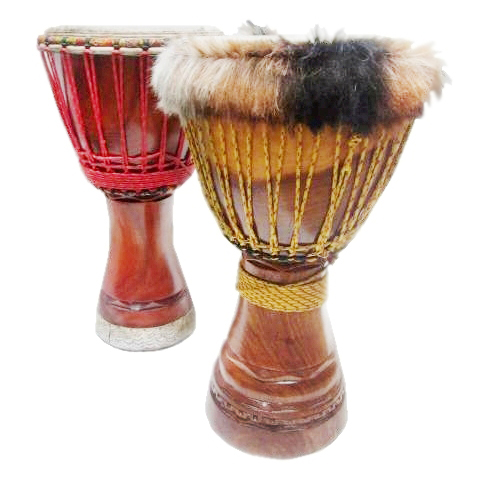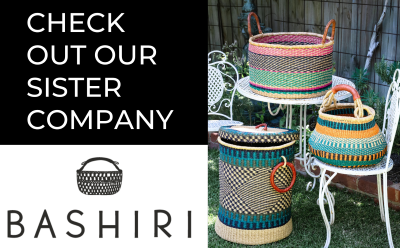A Comprehensive Guide to Choosing Your Perfect Djembe
Choosing a djembe is not just about picking any old drum off the shelf. It’s about finding that perfect instrument that resonates with you, both in sound and feel. Here’s a comprehensive guide to help you navigate the intricate world of djembe drum selection.
Height Matters
When it comes to the height of your djembe drum, it’s essential to find one that fits your body comfortably. The standard height range for djembes is between 60cm to 65cm tall. When seated, ensure that the rim of the drum is a couple of inches above your thigh. It shouldn’t be below or level with your leg, nor more than 4 inches above it. This positioning ensures optimal playing posture and comfort.

Skin Deep
The hide or skin of your djembe drum plays a crucial role in its sound and playability. For beginners, we recommend opting for thin or medium skins. Thinner skins are more responsive and easier on the hands, making them ideal for those just starting their djembe journey.
Diameter Dynamics
The diameter of the head is another crucial factor to consider. The standard head size for djembes is 12 inches. However, depending on your hand size and preference, you can look for sizes ranging from 11 inches to 14 inches. Experiment with different diameters to find the one that feels most comfortable and allows you to achieve the desired sound.
Wood Selection
The material of the shell significantly impacts the tone and quality of sound produced by the djembe. Look for drums made from a single piece of timber for optimal resonance. Entry-level drums often use medium-density woods, while premium djembes are crafted from hardwoods by skilled artisans. Hardwood drums offer a wider and richer tonal range, making them a preferred choice for seasoned players and professionals.
Extra Enhancements
Consider additional features that may enhance your playing experience. Some drums feature a Guinean aesthetic style of skinning, where the hide overlaps the rim. While this has no effect on the sound, it adds a unique visual appeal. Additionally, rubber tread is often added to the base of the drum for protection and stability. This acts as a shock absorber and prevents slipping during intense playing sessions.
Personal Preference
Ultimately, the choice of a djembe drum boils down to personal preference. Take the time to try out different drums, feel their weight, hear their sound, and assess their playability. Consider factors such as your skill level, playing style, and budget when making your selection. Whether you’re a beginner or a seasoned pro, investing in the right djembe drum will elevate your musical journey to new heights.
We’d be happy to help you find your first Djembe – how exciting!
We can send you a video with selected djembes, chosen for you.
Send us your details below, it’s a fast and easy way to hone in on the best drum for you.

Ghana djembes
Our most popular djembes!
A djembe from its place of birth is truly special! These entry-level drums present remarkable quality at exceptionally competitive prices. Crafted from Twenaboa timber of medium density, they boast substantial bass tones, delivering a rich low-end sound that has garnered widespread acclaim. These djembes, adorned with both traditional and contemporary carvings, offer effortless playability. The Ghana series comes in various sizes, ranging from 10” to 14”. Moreover, they are notably lightweight, ensuring convenient portability.


